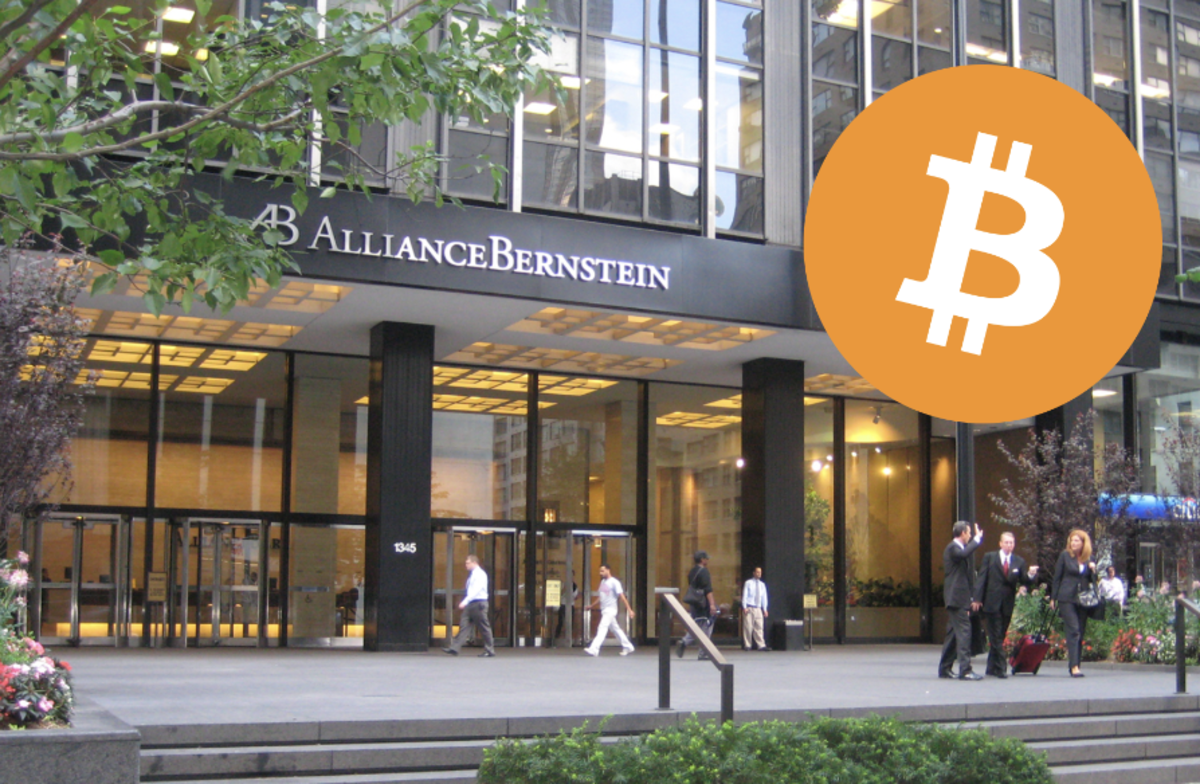Month: June 2024
BoJ’s announcement will weaken the yen – Julius Baer
Post Content
The Emerging Bitcoin Modular Ecosystem
What’s modularity anyway?
Modularity is the result of a curious experiment playing out in Ethereum as a reaction to the poor scaling properties of blockchains. To address this bottleneck, developers have taken the radical approach of auctioning off core functions of the main chain to… other blockchains.
Centered around rollup technology, this modular transformation has completely redefined how products and services are built on top of Ethereum. Breaking apart every element of the stack allows different architectures to be designed according to their use cases. Understandably this has led to a proliferation of… blockchains.
I kid you not. Everyone is getting hilariously rich selling blockchains, again.
While each new consensus protocol offers novel and interesting scaling opportunities, they also introduce a weird coordination problem. If users become dispersed across different networks, how is the economy made more efficient? How can we synchronize everyone across this distribution? Maybe one more… blockchain?
It’s turtles all the way down.
This fragmentation of the ecosystem has had a few obvious consequences. For one, users are siloed and trapped between intermediaries. While rollups have compelling trust-minimization properties, the inefficiency created by the transfer in and out of those systems creates unreasonable costs for users. It also exposes them to more risky options like bridges and centralized services.
For developers, the absence of interoperability across platforms creates friction and fosters a competitive rather than collaborative environment. Every other day a new protocol is created for new and existing teams to compete over with yet another copy of the same applications. In many cases, teams are opting to “bet on themselves”, spinning off into their own ecosystem (read: blockchain). It’s crucial to emphasize the appeal of this model, which allows for the customization and optimization of diverse components for each application. This flexible architecture empowers anyone to contribute their unique frameworks and inspire new designs. The possibilities are endless!
Unfortunately, those incentives have resulted in the fragmentation of the network effect. If nothing that’s built fits together, users will consolidate towards only a handful of competing networks. As a result, economic activity becomes concentrated into fewer permissioned systems.
This brand of modularity has brought people further from the goal when it shouldn’t. Using different interfaces to interact with the consensus protocol is a perfectly valid idea. However, Ethereum’s strategy proves problematic; it regards interoperability more as an optional feature than a foundational design principle. As long as Ethereum continues to pursue scalability by multiplying blockchains, the debate will persist, providing ample opportunities for competitors to exploit these divisions and encourage discord. Divide and conquer.
Bitcoin’s opportunity
On Bitcoin, a different architecture is emerging that favors a fundamentally different design. Using Lightning as the interoperability backbone, developers are slowly coalescing towards a technology stack much closer to Bitcoin’s peer-to-peer model.
Rather than attempt to replicate global shared states, protocols like Cashu or Fedimint are optimizing for local and permissionless interactions. Financial services can now be deployed across different economic hubs and remain connected through the Lightning Network.
Liquidity providers, atomic bridges, and ecash mints. A novel financial network all sharing the same settlement layer.
Nostr’s arrival provides the social abstraction that ties it all together. A social network based on similar principles as Bitcoin, it provides a simple set of rules engineered to maximize interoperability. By avoiding being prescriptive about the functions it enables, Nostr is unleashing a Cambrian explosion of open innovation.
Today, different projects are beginning to explore ways to facilitate Bitcoin commerce by making Nostr a native component of the Bitcoin user experience. The public key infrastructure underlying the protocol is a natural match for wallets and other payment applications, allowing them to communicate with each other and securely exchange messages. This communication layer can connect users with others and various services made available through the network. Standards like Nostr Wallet Connect are creating new opportunities for Bitcoin applications to interface with Nostr’s growing ecosystem.
A case study
Projects like Mutiny perfectly embody the differences in this Bitcoin modular vision. Users can simultaneously connect with services like Nostr Relays, Fedimint federations, and Lightning Service Providers (LSPs). Each of these grants access to a growing number of features and applications. Using Nostr as a discovery service, we are empowered to leverage our social network to identify and natively access applications and services endorsed by our peers. This web-of-trust introduces an interesting alternative to so-called trustless systems. Participants can begin relying on market incentives to engage in more efficient exchanges that aren’t encumbered by the tradeoffs required of more decentralized systems.
Eventually, marketplaces will emerge for liquidity providers, ecash mints, lenders, and coinjoin coordinators to advertise their services through Nostr. Decentralized order books projects Civkit could seamlessly integrate with Mutiny and allow users to engage in peer-to-peer trades. Every integration is designed around permissionless participation so that users can maintain full sovereignty over their interactions.
Platforms vs. protocols
Bitcoin’s modular story is not without its own risks. Fundamental pieces of the puzzle such as LSPs involve significant capital requirements that will create economies of scale between competing providers. The growth of ecash mints may be hindered by regulatory concerns and operator fraud. Nostr relays have already shown centralization tendencies and it remains unclear how the network topology will play out.
The success of this approach rests on market optionality and it is essential that the barriers to entry into these businesses remain low. A number of different efforts are being deployed to that end. For example, multiple Lightning companies are currently collaborating on a specification that would allow any market actors to implement their own LSP.
It’s probably too early to forecast how any of those architectures and protocols will evolve. As both worlds continue to collide, it’s likely that rollups find their place within the Bitcoin ecosystem. Application specific designs such as exchange rollups or zkCoins do not require global state and could perhaps be made to be interoperable with Lightning.
The tension between both methods is somewhat reminiscent of the early days of the internet. Commercial interest may favor platforms that allow them to capture portions of the network effect in order to monetize it. It could take longer for more open and permissionless protocols to truly get off the ground. The internet provides a cautionary tale with regards to the consolidation of services and applications into gatekeeping walled gardens. Hopefully, the current Bitcoin development path resolves into a future that prioritizes interoperability and permissionless access over financial silos.
Why Institutional Bitcoin Investors Need Optimal Networks
As Bitcoin is increasingly integrated into the economy, investors are recognizing the importance of scalability. Bitcoin investors are particularly interested in the potential of this digital asset to transform not only retail establishments and personal finances but also the goings-on of large institutions. From the financial to technology sector, Bitcoin is a novel domain that is poised to transform how finances are moved. There are critical considerations institutional investors must make regarding their network infrastructure before supporting large-scale Bitcoin. Learn how to prepare with the following insights that allow for security, speed, scalability, and effectiveness in the institutional Bitcoin trade.
Why Institutional Bitcoin Investors Need Optimal Networks
The rise of Bitcoin is akin to the early Internet days. The speed at which society is adopting Bitcoin is calling for efficient and effective upgrades in network infrastructure. Financial security is of utmost importance, and the speed at which data can be transferred is paramount for the effective integration of Bitcoin into large institutions. Optimal network performance provides institutional Bitcoin investors with the following benefits:
Enhanced transaction speed;Boosted security;More sustainable energy usage;The ability to accommodate large-scale Bitcoin operations.
Upgrading your network infrastructure is a strategic necessity when attempting to move into the large-scale Bitcoin space. The Bitcoin market is unique in its volatility, and a fast, stable network connection is imperative to keep up. Bitcoin can greatly diversify your institutional investment portfolio, but you must be aware of the requirements to do so on a larger or even global scale.
Network Stability
As an institutional investor, you likely already work on an established network. Large companies typically have their own servers to keep their network stable and working at all times. This is crucial for operations to run smoothly, and that includes investments in Bitcoin.
Blockchain infrastructure requires a certain level of network stability due to the large amounts of transactional data that is stored across multiple databases in a distributed ledger. Bitcoin uses blockchain technology to ensure it is almost impossible for the data to be hacked or corrupted. To make sure your network is stable enough to transfer data between nodes, you must have:
Scalable blockchain software, like IBM Blockchain;Reliable internal servers or external servers, like the Canton Network;Sufficient hardware, like robust graphics cards and CPUs;Stable, fast internet connection.
You will likely have multiple devices across a network communicating with each other all at once, so it’s imperative to have stable business internet. Your bandwidth should be able to accommodate large amounts of data being transferred and stored on internal and external servers at all times.
Keeping an Eye on Performance Metrics
When selecting an internet service provider (ISP), hardware, and software package for your institutional Bitcoin investing, check on key performance metrics like packet loss and jitter. Packet loss is when some parts of transferred data don’t make it to the receiving end. Large amounts of data are more easily transferred across networks when broken down into pieces, or packets. However, some of these packets can be lost or corrupted if your hardware is insufficient, software has bugs, or your ISP’s network is clogged.
You can also experience jitter or the process of some of the packets coming at a delay. For Bitcoin investment, this is a deal-breaker. You need reliable, stable networks that don’t crash. You can solve this by upgrading your hardware, hosting your networks onsite, or partnering with a powerful ISP with low packet loss and jitter occurrences.
Energy Consumption
Institutional Bitcoin is not only taxing in terms of data load, but it is also energy-intensive. Consumers are increasingly keen on businesses’ commitments to sustainability, so finding alternative energy sources for Bitcoin mining and investment can be a strategic move. By employing energy-conscious moves like solar, you can enjoy:
Lower energy costs and greater profits; Constant access to abundant power sources without Bitcoin investment interruption;Independence from the main energy grid, allowing you to be self-sufficient and have a leg up on the competition.
The potential of solar power to revolutionize Bitcoin mining and trading is palpable. It is currently being optimized to harness more photovoltaic power with less solar waste. Once these issues are resolved, using solar for Bitcoin transactions is poised to be the best way to reduce carbon emissions and lower your dependence on the energy grid. This can provide institutions with the resilience and stability needed to foster long-term Bitcoin viability.
Cloud-Based Solutions
If you are looking to partner with external network solutions for institutional Bitcoin investment, make sure you vet the company thoroughly. Cloud-based solutions can be less energy-intensive and costly than setting up your own secure networks on-premises. However, they must be just as secure in order for Bitcoin investment to remain safe and scalable. For instance, Google Cloud and Voltage partnered to create global Lighting Network solutions. This means that they are offering low-cost, cloud-based services that are scalable and able to transmit data globally. Solutions like this set the standard for reputable cloud-based Bitcoin transfer.
Emphasize Speed, Security, and Scalability
A stable network should also be a speedy network. Your ISP should match your expectations when it comes to high-traffic internet speeds. Working with secure partners or hosting servers onsite is the best way to keep institutional Bitcoin investment transactions safe and secure. Large-scale investments require a level of scalability that the Bitcoin industry is only beginning to experience. Make sure to vet every third-party institution that you work with, and brush up on hardware and software requirements regularly. This will make institutional Bitcoin investment a breeze as you move forward into the future of finance.
This is a guest post by Miles Oliver. Opinions expressed are entirely their own and do not necessarily reflect those of BTC Inc or Bitcoin Magazine.
MicroStrategy Boosts Stock Sale to $700M to Buy More Bitcoin
MicroStrategy, led by CEO Michael Saylor, has increased the size of its planned stock sale to raise additional funds to purchase Bitcoin. The company is now seeking to raise $700 million, up from the previously announced $500 million.
BREAKING: MicroStrategy increased its raise to $700 million to buy more #Bitcoin pic.twitter.com/B2I2uk98Ie
— Bitcoin Magazine (@BitcoinMagazine) June 14, 2024
MicroStrategy first announced plans on Thursday to raise $500 million by selling convertible senior notes to qualified institutional buyers. The proceeds would primarily go toward acquiring more Bitcoin for its corporate treasury, which already contains over 214,400 BTC worth $15 billion.
The software analytics firm then boosted the offering to $700 million on Friday. The company said the offering is expected to close on June 17th.
MicroStrategy has aggressively accumulated bitcoin since 2020 under Saylor’s direction. It utilizes debt to fund its Bitcoin buying, taking advantage of market volatility. The company cited its confidence that Bitcoin will continue appreciating over the long term.
By selling convertible senior notes, MicroStrategy gains flexibility. The notes pay interest and mature in 2032, but noteholders can convert into MicroStrategy stock before maturity.
This structure allows investors to benefit from potential Bitcoin price upside through the stock conversion option. It also shields note holders from downside risk due to their senior unsecured status.
MicroStrategy said it may use proceeds not allocated to Bitcoin purchases for general corporate purposes. However, its intent is clearly to expand its Bitcoin trove while prices remain depressed.
The additional capital injection signals MicroStrategy’s continued conviction in Bitcoin as its primary treasury reserve asset. Saylor is doubling down by acquiring more coins amid the current market turbulence.
Bernstein: Bitcoin Could Hit $1 Million by 2033
Major Wall Street firm Bernstein has made a bullish long-term prediction for Bitcoin’s price, saying it could reach $1 million by 2033.
JUST IN: $779 billion Bernstein says #Bitcoin will likely hit $1 million.
Predicts $200,000 price by 2025 
— Bitcoin Magazine (@BitcoinMagazine) June 14, 2024
In a new report initiating coverage of Michael Saylor‘s MicroStrategy, Bernstein analysts have raised their price target for Bitcoin to $200,000 from $150,000 by the end of 2025.
Bernstein has long been positive on Bitcoin’s prospects, but this $1 million forecast by 2033 represents one of the highest institutional projections yet. The analysts’ thesis is based on unprecedented demand from spot Bitcoin ETFs and constrained future supply.
Bernstein’s report also highlighted how Michael Saylor “has become synonymous with brand Bitcoin and has positioned MSTR as a leading Bitcoin company, attracting at-scale capital (both debt and equity) for an active Bitcoin acquisition strategy.”
“MicroStrategy positions itself as an ‘active leveraged bitcoin strategy versus passive spot exchange-traded funds (ETFs),’ the report said, noting that over the last four years, the company’s active strategy has produced a higher Bitcoin per equity share,” Bernstein wrote.
Bernstein also set a $2,890 price target on MicroStrategy shares, representing nearly double the current price.
The bold long-term Bitcoin outlook comes as institutions warm up to Bitcoin, with major asset managers like BlackRock and Fidelity offering BTC investment products. Bernstein cited inflows into these regulated vehicles as fueling this cycle’s exponential Bitcoin price gains.
The analysts see MicroStrategy maintaining its first-mover advantage as the world’s leading listed Bitcoin player. With BTC adoption still in its infancy, firms like MicroStrategy have room to grow their Bitcoin holdings for years to come.
Dollar just lower; euro set for sharp weekly loss on political turmoil
Post Content
‘Bitcoin is Exponential Gold’, Says Fidelity’s Director of Global Macro
Jurrien Timmer, Fidelity’s Director of Global Macro, recently made a notable statement about Bitcoin, describing it as “exponential gold” and an emerging player on the “store of value” team. Timmer’s comments were shared through a series of posts, where he elaborated on Bitcoin’s evolving role in the financial ecosystem.
In my view, bitcoin is exponential gold and an aspiring player on the store of value team. My work suggests that the price of bitcoin is driven primarily by the growth in its network, which is in turn driven by bitcoin’s unique scarcity feature, as well as the monetary and fiscal…
— Jurrien Timmer (@TimmerFidelity) June 13, 2024
Timmer highlighted Bitcoin’s unique position in the market, and compared its growth trajectory to the exponential adoption curves seen in technologies like the internet and mobile phones. He emphasized that Bitcoin’s scarcity and growing acceptance as a digital asset contribute to its potential as a long-term store of value, akin to gold.
In his posts, Timmer suggested that its adoption rate and network growth are critical factors in its valuation. He noted that while Bitcoin is still in its early stages compared to traditional assets, its adoption is accelerating at an exponential rate, supporting the thesis that Bitcoin could become a significant store of value in the future.
“The chart below shows Bitcoin’s growing network along a simple power curve. The number of non-zero addresses has converged towards this power curve, with Bitcoin’s price oscillating around it like a pendulum,” he said. “Such is Bitcoin’s unique series of boom-bust cycles.”
Timmer’s endorsement aligns with a broader trend among institutional investors recognizing Bitcoin’s potential. His perspective reinforces the growing legitimacy of Bitcoin within the financial industry, suggesting that it could play a vital role in future investment strategies.
“The growth of Bitcoin’s network has slowed in recent months, while its price has continued to gain,” he concluded. “In my view, this divergence between price and adoption could explain why Bitcoin has slowed down a bit along its path to potential new all-time highs. The pendulum will only swing so far. For the new highs to continue, the network may have to accelerate again.”
Can Bitcoin Be A Productive Asset?
Bitcoin is undergoing a fascinating evolution, with various perspectives on its nature. Some view it as a currency for everyday transactions, others as a modern equivalent of gold for storing value, and yet others as a decentralized global platform for securing and validating off-chain transactions. While these views all hold some truth, Bitcoin is increasingly establishing itself as a digital base money.
Functioning akin to physical gold as a bearer asset, inflation hedge, and providing currency denominations like the dollar, Bitcoin is reshaping the concept of monetary base assets. Its transparent algorithm and fixed supply of 21 million units ensure a non-discretionary monetary policy. Contrastingly, traditional fiat currencies like the US dollar rely on centralized authorities to manage their supply, raising questions about their predictability and effectiveness in an age of volatility, uncertainty, complexity, and ambiguity (VUCA).
This contrast is particularly notable in light of Nobel laureate Friedrich August von Hayek’s critique of centralized monetary decision-making in his work “The Pretense of Knowledge.” Bitcoin’s transparent and predictable monetary policy stands in stark contrast to the opaque and potentially unpredictable nature of traditional fiat currency management.
To Leverage, or Not to Leverage Bitcoin
For staunch Bitcoin proponents, the immutable 21 million supply cap is sacred. Altering it would fundamentally alter Bitcoin itself, making it something entirely different. Thus, within the Bitcoin community, skepticism towards leveraging Bitcoin is widespread. Many see any form of leverage as akin to fiat currency practices, undermining Bitcoin’s core principles.
This skepticism towards leveraging Bitcoin is rooted in the distinction between commodity credit and circulation credit, as outlined by Ludwig von Mises. Commodity credit is based on real savings, whereas circulation credit lacks such backing, resembling unbacked IOUs. Bitcoiners view leveraging that creates “paper Bitcoin” as economically risky and destabilizing.
Even nuanced perspectives within the community are cautious about leveraging, aligning with figures like Caitlin Long, who has been warning against the dangers of leveraging Bitcoin. The collapse of leveraged-based Bitcoin lending companies in 2022, such as Celsius and BlockFi, further reinforced the concerns voiced by Long and others about the risks associated with leveraging Bitcoin.
Celsius and Co. Proved the Point
The crypto market witnessed a significant upheaval reminiscent of the Lehman Brothers collapse in 2022, triggering a widespread credit crunch that affected various players in the crypto lending sector. Contrary to assumptions, most crypto lending activities were not peer-to-peer and carried considerable counterparty risks, as customers lent directly to platforms, which then deployed these funds into speculative strategies without adequate risk management.
It was the rise of major DeFi protocols during the DeFi summer of 2020 that offered promising avenues for yield generation. However, many of these protocols lacked sustainable business models and tokenomics. They relied heavily on protocol token inflation to sustain attractive yields, resulting in an unsustainable ecosystem disconnected from fundamental economic principles.
The 2022 crypto credit crunch highlighted various issues with centralized yield instruments, emphasizing concerns about transparency, trust, and risks such as liquidity, market, and counterparty risks. Moreover, it underscored the pitfalls of centralization and off-chain risk management processes, which, when applied to blockchain-based “banking services,” mimic traditional banking flaws.
So despite the optimism surrounding the bull market of 2020/21, many institutions due to the lack of these processes, including Voyager, Three Arrows Capital, Celsius, BlockFi, and FTX, went under. The inability to implement necessary checks and balances transparently and independently often leads to over-regulation and recurrent failures and fraud, mirroring the historical challenges of traditional banking systems. However, the absence of regulation is not a solution either
Bitcoin-based Yield is not Optional
Where does this leave us? Given this 2022 episode, more and more Bitcoiner have been posting the question: Should we embrace Bitcoin yield products, or do they pose too great a risk, echoing characteristics of the fiat system? While valid concerns exist, it’s unrealistic to expect Bitcoin-based yield products to vanish entirely.
The question is becoming all the more prevalent with the newly emerging Bitcoin ecosystem. Increasingly projects are building (or are claiming) to build out financial infrastructure as well as applications on Bitcoin directly. Could this create the same issues again we already witnessed in the wider crypto sphere?
Most likely yes. That is just the nature of the game. And since Bitcoin is a permissionless protocol, everyone can build on top of it, including the people who want to build Bitcoin-powered finance. And finance will inevitably need credit and leverage.
This is a historical fact: In any thriving society, the necessity for credit and yield naturally arises, serving as a catalyst for economic growth. Without credit, underdeveloped economies struggle to escape the confines of subsistence living. It’s only through access to credit that a more sophisticated and productive economic structure can emerge.
To realize the vision of a Bitcoin-based economy, proponents recognize the need for credit and yield mechanisms to develop atop the Bitcoin protocol. While Bitcoin’s role as a form of money is often lauded, the reality is that for it to function effectively as a currency, it requires a native economy to support it.
This underscores the importance of Bitcoin-based yield products in fostering the growth of a robust Bitcoin-centric economy. Such an ecosystem would leverage Bitcoin as its digital base money while utilizing yield products to drive adoption and utilization.
It’s All a Trust Spectrum, Anon
Bitcoin-powered finance will necessarily be built in layers. From a system’s point of view, this isn’t much different from today’s financial system, where there is an inherent hierarchy in money-like assets. To properly understand the inevitable trade-offs that come with this, it is important to have a high-level framework to distinguish the different implementations of Bitcoin residing on different layers.
When it comes to offering yield on Bitcoin, it is essential to understand that options can be built along a three-folded trust spectrum. The primary aspects to look at are:
ConsensusAssetYield
Assessing Bitcoin-like assets and Bitcoin yield products based on their degree of Bitcoin nativeness provides a valuable framework for evaluating their alignment with Bitcoin’s ethos. Assets and products scoring higher on this spectrum are typically more trust-minimized, reducing reliance on intermediaries in favor of transparent and resilient code.
This shift mitigates counterparty risks, as reliance transitions from off-chain intermediaries to code. The code’s transparency enhances resilience compared to intermediaries that have to be trusted.
This is a progression worth exploring, and creating options for a native yield on Bitcoin should be the gold standard and the ultimate goal of the Bitcoin community.
Consensus Angle
This assessment categorizes Bitcoin yield products based on their alignment with the Bitcoin blockchain’s consensus, distinguishing between four categories.
No Consensus: This category represents centralized platforms where the base infrastructure remains off-chain. Examples include centralized platforms like Celsius or BlockFi, which hold full custody over users’ assets, exposing them to counterparty risks and dependency on intermediaries. While these platforms utilize Bitcoin, their yield strategies are primarily executed off-chain through traditional finance mechanisms. Despite being a step towards Bitcoin adoption, these platforms remain highly centralized, resembling traditional financial institutions, yet often unregulated in contrast.Standalone Consensus: In this category, the base infrastructure is decentralized, represented by public blockchains such as Ethereum, BNB Chain, Solana, and others. These blockchains have their own consensus mechanisms independent of Bitcoin’s and are not explicitly tied to Bitcoin’s consensus.Inherited Consensus: Here, the base infrastructure is decentralized, represented by Bitcoin sidechains or Layer-2 solutions with distributed consensus. While these sidechains have their own consensus mechanisms, they aim to align more closely with Bitcoin’s blockchain. Examples include federated sidechains like Rootstock, Liquid Network or Stacks.Native Consensus: This category relies on Bitcoin’s native consensus mechanism as the underlying security model. Instead of a separate blockchain or sidechain, it utilizes off-chain state channels cryptographically linked to the Bitcoin blockchain. The Lightning Network is a prime example of this approach, offering a high level of trust-minimization by fully relying on Bitcoin’s consensus.
The closer a Bitcoin yield product is to Bitcoin’s native consensus, the more aligned it is with Bitcoin and generally the more trust-minimized it is perceived to be. However, nuances exist within the standalone and inherited consensus categories, where the level of decentralization and security of the underlying infrastructure varies.
Overall, while no consensus yields the lowest level of decentralization and trust-minimization, native consensus is believed to offer the highest level of trust-minimization, although considerations of consensus security and decentralization require further analysis.
Source: Brick Towers
Asset Angle
When considering the asset used by Bitcoin yield products, alignment with Bitcoin (BTC) can be categorized into three main groups.
Non-BTC: This category includes solutions that use assets other than BTC, which results in a low level of alignment with Bitcoin. An example is Stack’s stacking option, where Stack’s native coin STX is used to generate a yield in BTC.Tokenized BTC: Here, the asset used is a tokenized version of BTC, increasing alignment with Bitcoin compared to non-BTC assets. Tokenized BTC can be found on public blockchains like Ethereum (WBTC, renBTC, tBTC), BNB Chain (wBTC), Solana (tBTC), and others. Additionally, tokenized BTC is hosted on Bitcoin sidechains with inherited consensus mechanisms, such as sBTC, XBTC, aBTC, L-BTC, and RBTC.Native BTC: This category features assets that are on-chain Bitcoin (BTC) without any tokenized versions involved, offering the highest level of alignment with Bitcoin. Various CEX solutions and Babylon’s Bitcoin staking protocol utilize BTC directly. Babylon aims to scale Bitcoin’s security by adapting Proof-of-Stake mechanisms for Bitcoin staking. Furthermore, projects like Stroom Network leverage the Lightning Network to enable Liquid Staking, where users can earn Lightning Network revenue by depositing BTC and minting wrapped tokens like stBTC and bstBTC on EVM-based blockchains for use in the wider DeFi ecosystem.Source: Brick Towers
Yield Angle
When examining the yield side of Bitcoin yield products, the question of Bitcoin alignment also arises, leading to similar categorizations as with the asset side: non-BTC, tokenized BTC, and native BTC.
Non-BTC Yield: Babylon offers yields in the native asset of the Proof-of-Stake (PoS) blockchain, enhancing the blockchain’s security through Babylon’s staking mechanism.Tokenized BTC Yield: Stroom Network provides yields in the form of lnBTC tokens. Sovryn, operating on Rootstock, facilitates lending and borrowing on Bitcoin using tokenized BTC (RBTC) as yield. On the Liquid Network, the Blockstream Mining Note (BMN) offers yields in BTC or L-BTC at maturity, providing qualified investors access to Bitcoin hashrate through an EU-compliant security token in USDT.Native BTC Yield: Stacks offers various options, including yields paid out in tokenized BTC for some yield applications utilizing sBTC. However, for Stacks’ stacking option, yields accrue in native BTC. Similarly, centralized yield products provided by certain CEXs deliver native BTC as yield to users.Source: Brick Towers
Bitcoin’s Gold Standard: Native All the Way Through
Contemplating the ideal Bitcoin-based yield product, the gold standard product would combine the following three attributes: Native Bitcoin consensus, native Bitcoin asset and native Bitcoin yield. Such a product would mimic near-perfect Bitcoin alignment.
As of now, such solutions are only just being built. One such project in active development is Brick Towers. Their vision for the ideal Bitcoin-based yield product embodies near-perfect Bitcoin alignment by incorporating native Bitcoin consensus, asset, and yield. With a focus on Bitcoin as a long-term savings solution, Brick Towers aims to provide customers with a trust-minimized and native approach to utilizing Bitcoin.
Their planned solution revolves around generating a native yield in Bitcoin, leveraging Brick Towers’ automation service for other nodes within the Lightning Network. Through an optimization algorithm solving for economic utility, capital is strategically deployed to meet the liquidity demands of other network participants, optimizing capital efficiency while minimizing counterparty risks.
This approach not only fosters the growth of the Lightning Network but also enhances Bitcoin’s utility as an asset, all while providing customers with a seamless and secure means of earning yield on their Bitcoin holdings. Importantly, Brick Towers’ solution avoids the use of wrapped coins, further reducing counterparty risks and reinforcing their commitment to Bitcoin’s native ecosystem.
This article was researched and written by Pascal Hügli in collaboration with Brick Towers. Hügli is a dedicated Bitcoin analyst and researcher, deeply immersed in all facets of the Bitcoin ecosystem. He has been studying the development of a proper and robust Bitcoin-based financial system for years. This article has originally been published in a longer form version here.
This is a guest post by Pascal Hügli. Opinions expressed are entirely their own and do not necessarily reflect those of BTC Inc or Bitcoin Magazine.
Dollar gains on hawkish Fed, even as inflation cools
Post Content
Michael Saylor’s MicroStrategy To Raise $500M To Buy More Bitcoin
MicroStrategy, led by CEO Michael Saylor, announced it will raise $500 million through a private offering of convertible senior notes. The proceeds will fund additional purchases, furthering its corporate Bitcoin accumulation strategy.
BREAKING: 
— Bitcoin Magazine (@BitcoinMagazine) June 13, 2024
MicroStrategy is already the largest public company holder of Bitcoin, with over 214,400 BTC worth $15 billion on its balance sheet. Starting in 2020, under Saylor’s direction, it adopted Bitcoin as its primary reserve asset.
It’s average purchase price per Bitcoin remains around $35,000. With Bitcoin trading near $68,000, the firm is still significantly in the green on its holdings.
The latest $500 million capital raise comes via selling convertible senior notes to qualified institutional buyers. The notes will pay interest semiannually and mature in 2032 unless converted or redeemed earlier.
According to the announcement, MicroStrategy may use the funds for general corporate purposes, but Bitcoin acquisition remains the priority. The company will also grant initial purchasers an option to buy an additional $75 million of notes.
MicroStrategy’s Bitcoin-buying obsession has made it a Wall Street proxy for Bitcoin itself. The company’s stock often rises and falls with Bitcoin’s price movements, with investors betting on BTC’s upside.
With this latest capital injection, MicroStrategy is signaling its conviction that Bitcoin will continue appreciating over the long term. Saylor is ready to double down by acquiring more coins while prices remain relatively low.









